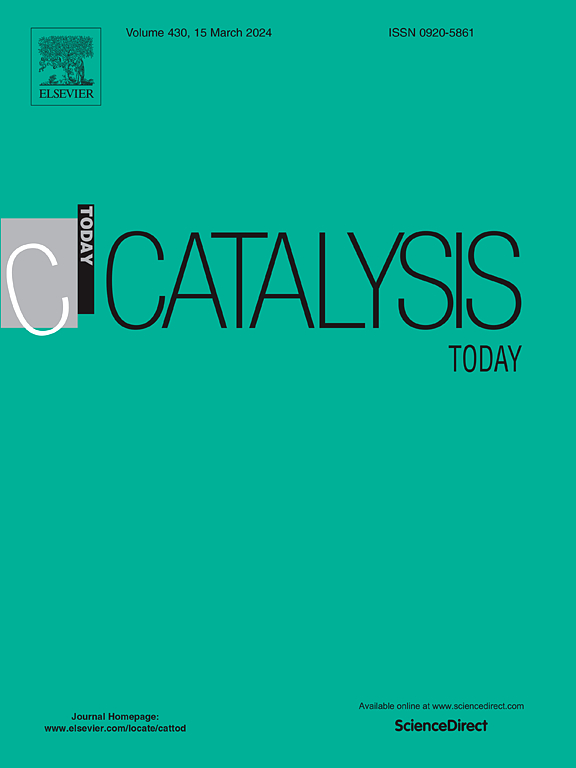Sustainable energy cycles based on liquid oxygenates as carbon-neutral hydrogen carriers: A holistic vision
IF 5.2
2区 化学
Q1 CHEMISTRY, APPLIED
引用次数: 0
Abstract
Simple energy-dense liquid oxygenates obtained directly from biomass e.g., fermentation ethanol, or “solar methanol”, synthesised from renewable hydrogen (via PV-driven water electrolysis) and recycled carbon dioxide, could provide the basis of an energy cycle that is climate-neutral and promotes long-term sustainability in industrial chemical processing. The development of new earth-abundant heterogeneous (photo-)catalysts and associated reaction engineering promoting hydrogen release (by steam-reforming) and insertion (by CO2 hydro-deoxygenation) under mild conditions will be pivotal to its success. This review anticipates the key methodologies involved in future bio-refineries and forecasts the increasing role therein of modular and portable low-power solar concentrators as renewable (photonic and thermal) resources. The techno-economic prospects for oxygenates like acetaldehyde, ethylene glycol, and glycerol, are also considered based on their reactivity (C2) and/or a pre-existent supply glut in need of valorisation (C3). Many examples highlighting the growing importance of computational (DFT and microkinetic) modelling in catalyst development are presented.
基于液态氧化物作为碳中性氢载体的可持续能源循环:整体愿景
直接从生物质(如发酵乙醇)或“太阳能甲醇”(由可再生氢(通过光伏驱动的水电解)和回收的二氧化碳合成)中获得的简单能量密度高的液态氧合物,可以为气候中和的能源循环提供基础,并促进工业化学加工的长期可持续性。开发地球上储量丰富的新型多相(光)催化剂以及在温和条件下促进氢释放(通过蒸汽重整)和插入(通过CO2加氢脱氧)的相关反应工程将是其成功的关键。本文展望了未来生物精炼厂所涉及的关键方法,并预测了模块化和便携式低功率太阳能聚光器作为可再生(光子和热)资源的日益重要的作用。氧合物如乙醛、乙二醇和甘油的技术经济前景也基于它们的反应性(C2)和/或需要估值的预先存在的供应过剩(C3)来考虑。许多例子突出了计算(DFT和微动力学)建模在催化剂开发中的重要性。
本文章由计算机程序翻译,如有差异,请以英文原文为准。
求助全文
约1分钟内获得全文
求助全文
来源期刊

Catalysis Today
化学-工程:化工
CiteScore
11.50
自引率
3.80%
发文量
573
审稿时长
2.9 months
期刊介绍:
Catalysis Today focuses on the rapid publication of original invited papers devoted to currently important topics in catalysis and related subjects. The journal only publishes special issues (Proposing a Catalysis Today Special Issue), each of which is supervised by Guest Editors who recruit individual papers and oversee the peer review process. Catalysis Today offers researchers in the field of catalysis in-depth overviews of topical issues.
Both fundamental and applied aspects of catalysis are covered. Subjects such as catalysis of immobilized organometallic and biocatalytic systems are welcome. Subjects related to catalysis such as experimental techniques, adsorption, process technology, synthesis, in situ characterization, computational, theoretical modeling, imaging and others are included if there is a clear relationship to catalysis.
 求助内容:
求助内容: 应助结果提醒方式:
应助结果提醒方式:


